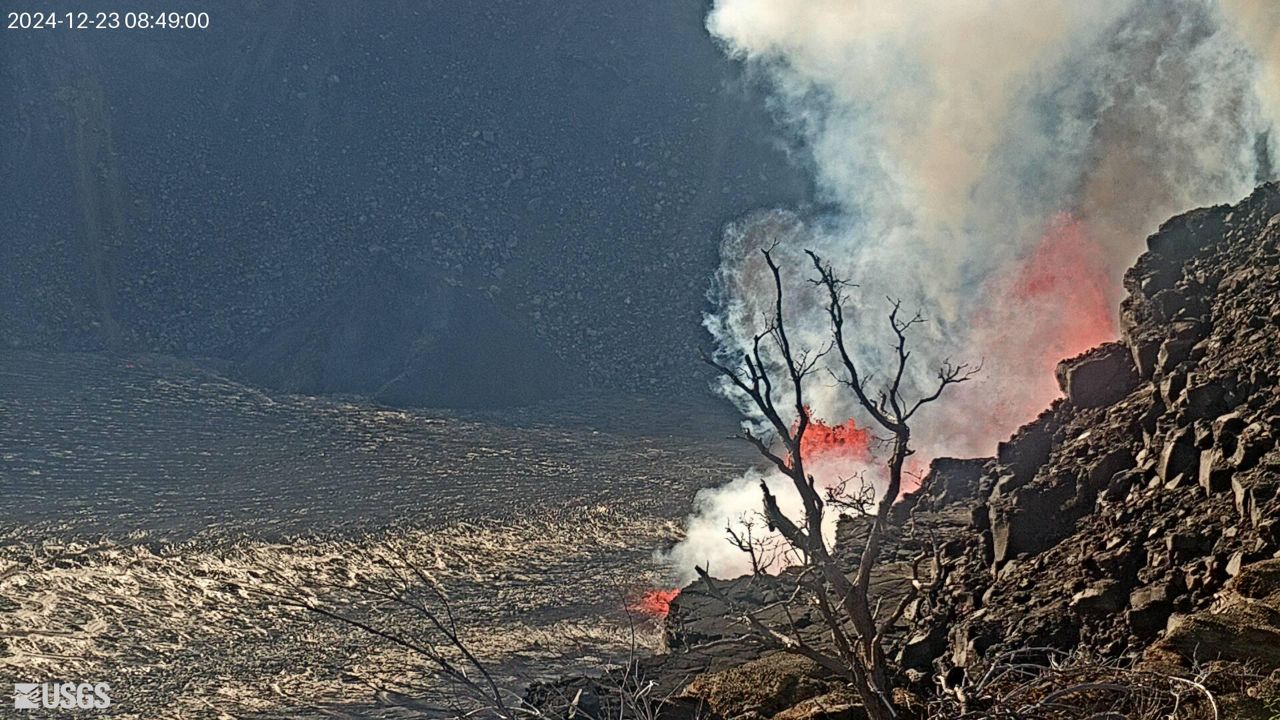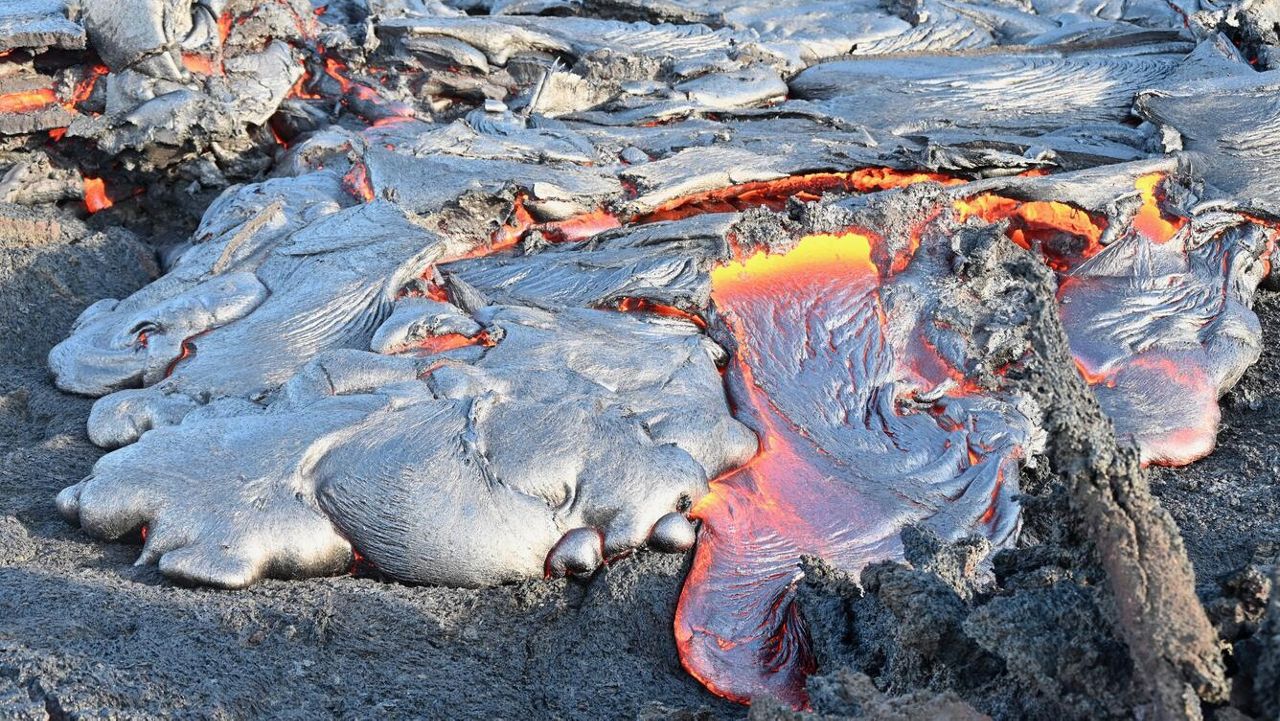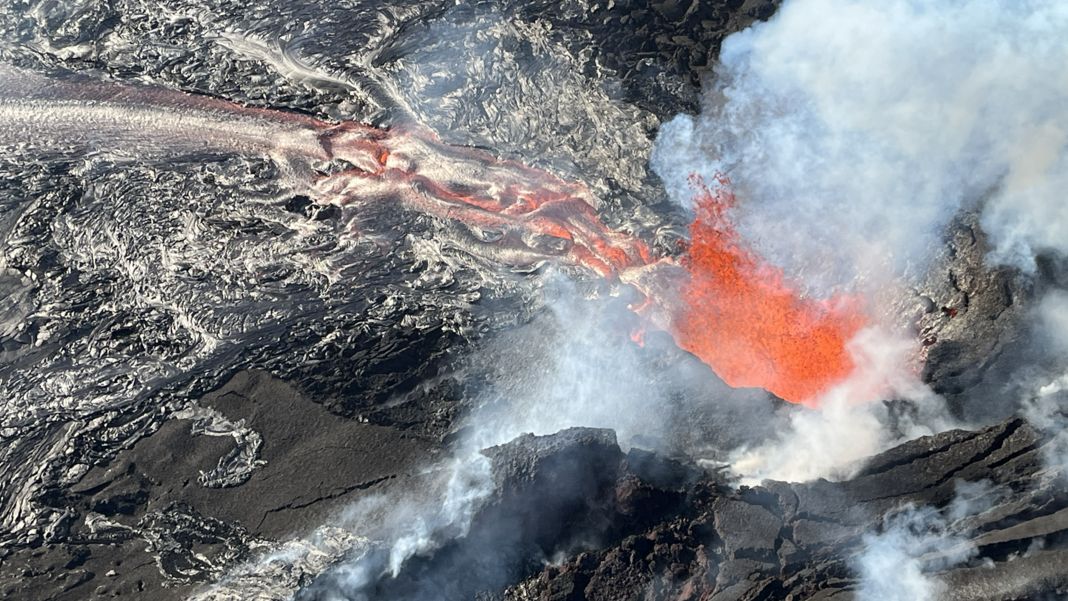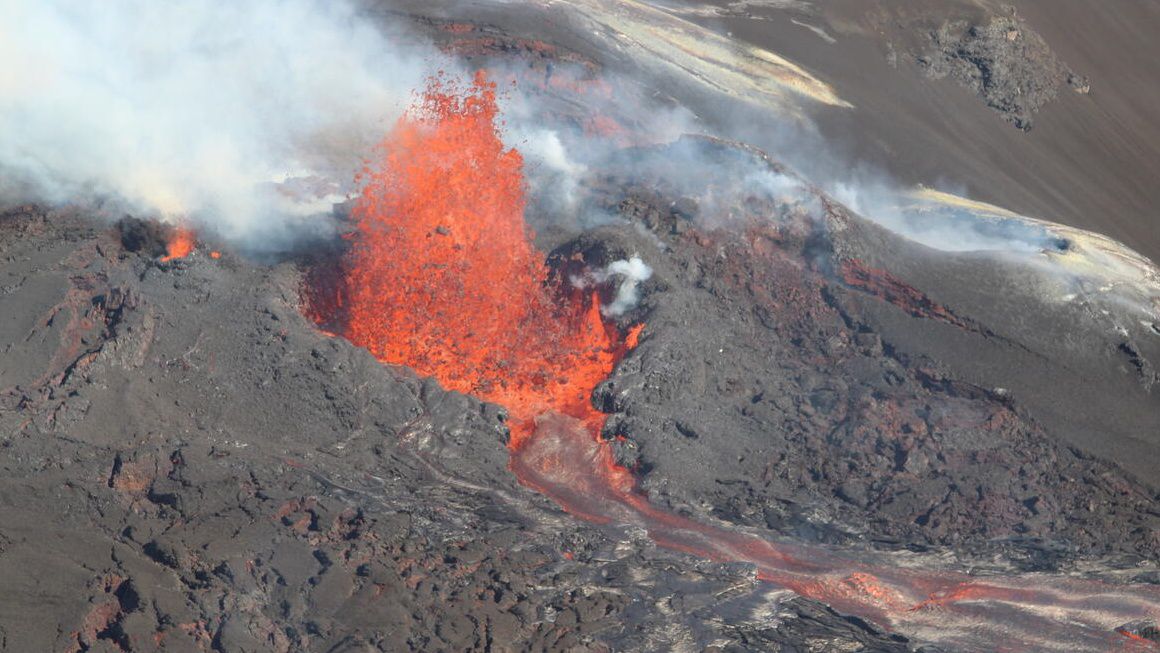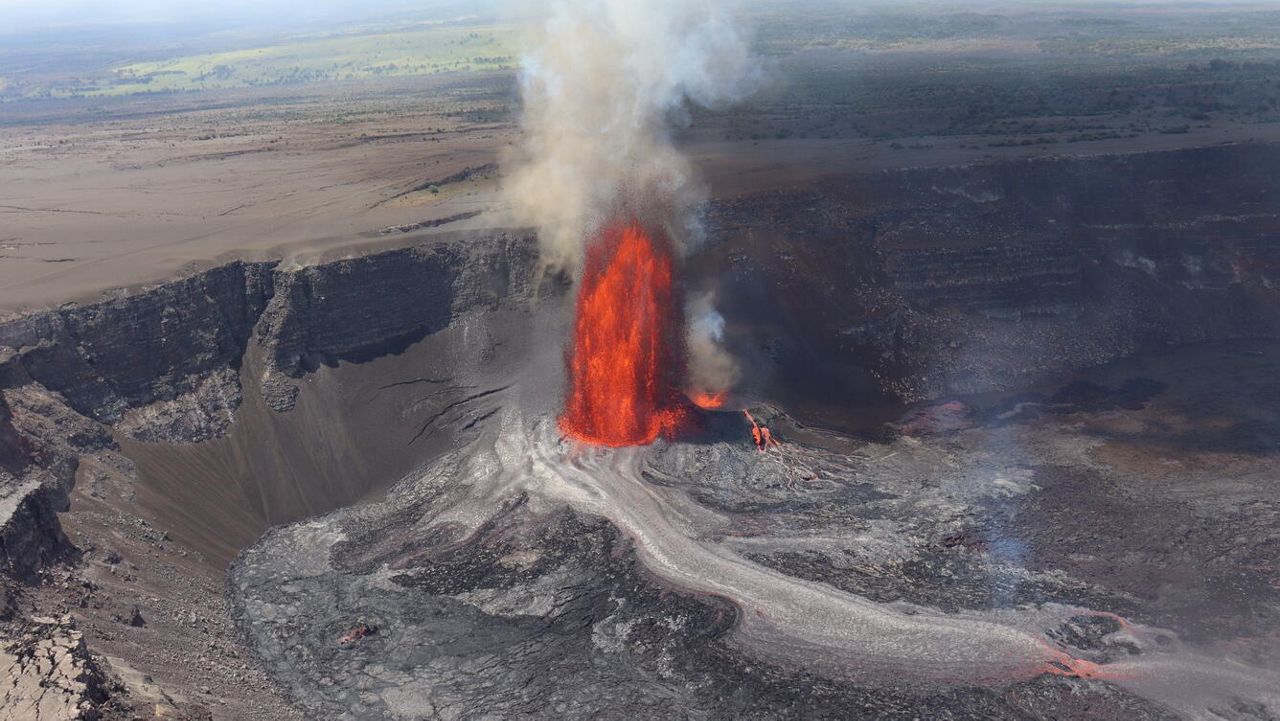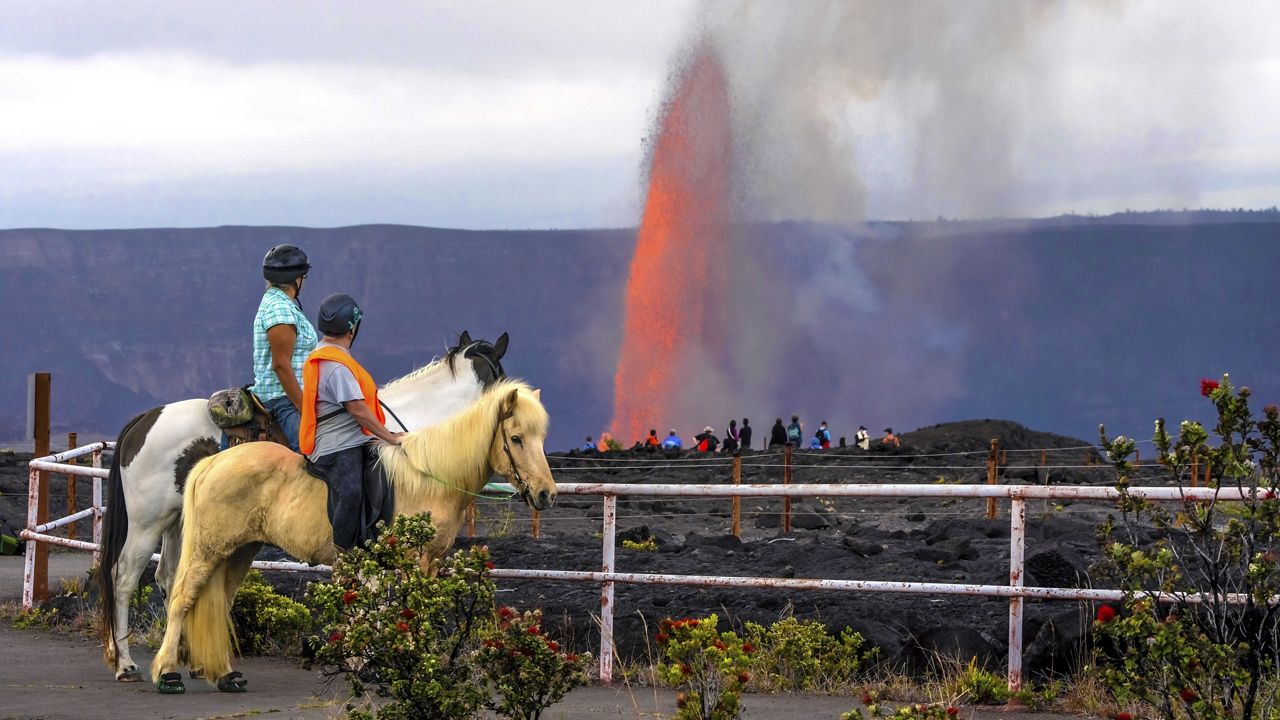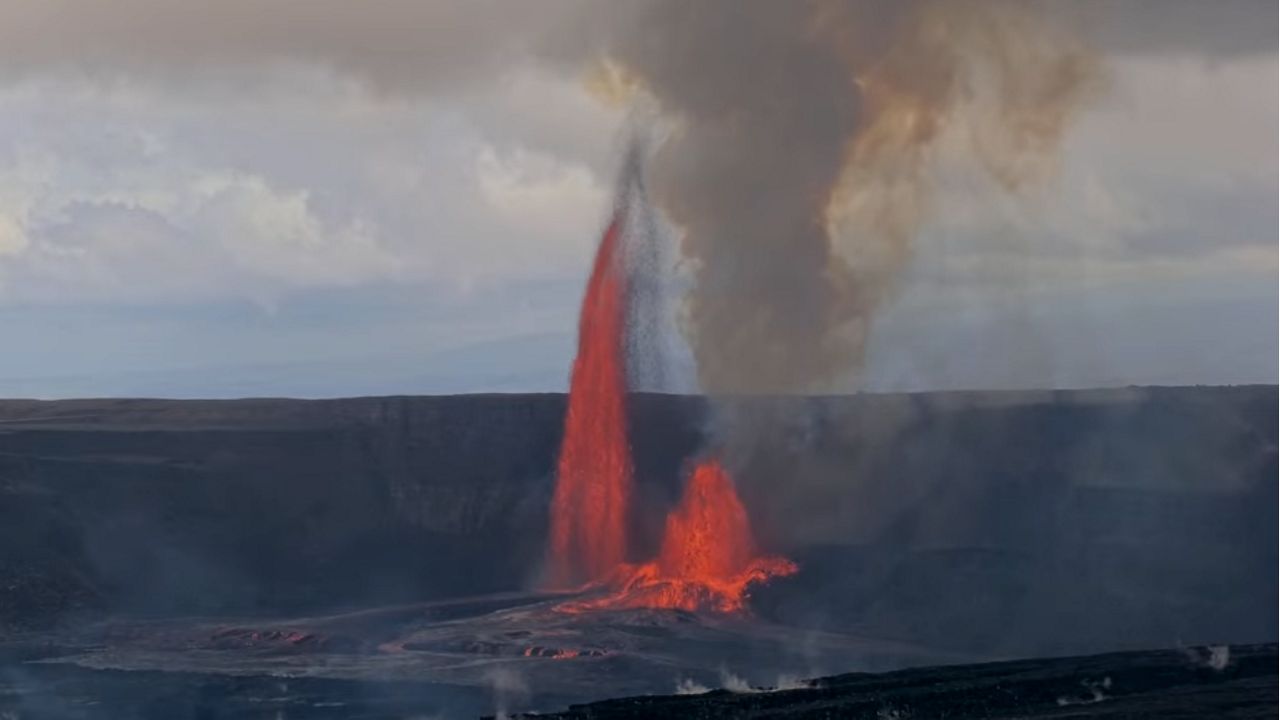The Kilauea volcano eruption paused Monday about 13 hours after it started.
On Monday at 2:20 a.m., Kilauea volcano started erupting within Halemaumau crater in the summit caldera. Lava fountains in the southwest part of the caldera reached heights up to 300 feet. The new lava covered about 650 acres, including all of Halemaumau and most of the adjacent downdropped block. The Hawaiian Volcano Observatory estimated the lava was about 1 yard thick. But around 3 p.m., the eruption slowed significantly and appeared to pause, according to the Hawaiian Volcano Observatory.
The summit’s tilt stopped showing deflation and seismic tremor began decreasing around 3 p.m. on Monday. By 3:30 p.m., lava fountains were barely visible. By 4 p.m., fountaining had stopped and seismic tremor was close to background levels.
While there was no threat to human life or infrastructure, emission rates of volcanic gases were very high during the eruption. The plume of volcanic gas and particles were transported downwind in a southwest direction over a closed area of Hawaii Volcanoes National Park. Nearby monitoring stations estimated over 100,000 tonnes of sulfur dioxide per day around 8 a.m., decreasing by half in the early afternoon.
Michelle Broder Van Dyke covers the Hawaiian Islands for Spectrum News Hawaii. Email her at michelle.brodervandyke@charter.com.





